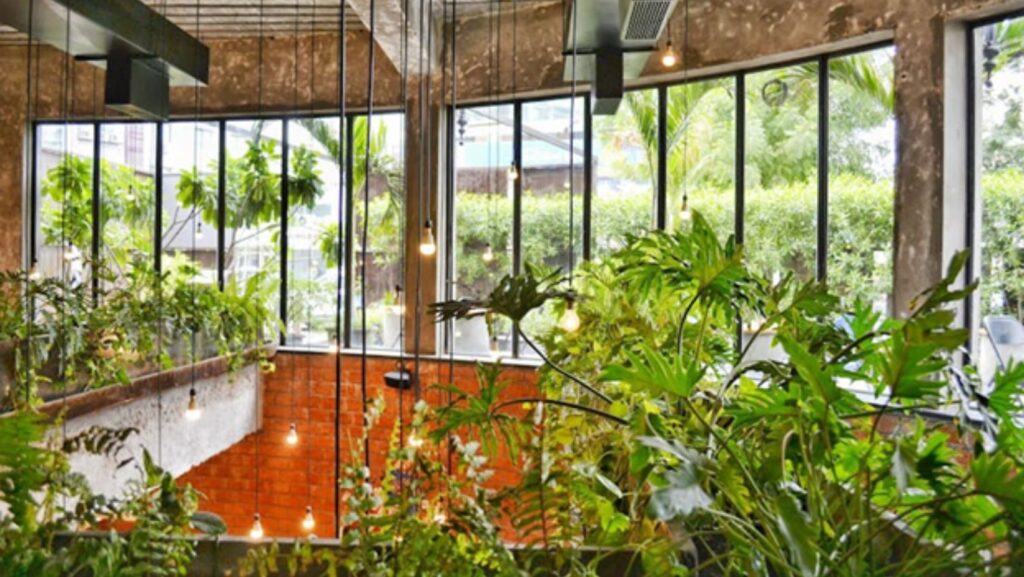The world is grappling with the pressing issue of climate change, and the built environment is a significant contributor to greenhouse gas emissions. Commercial buildings, in particular, consume vast amounts of energy and resources. However, they also present a tremendous opportunity to mitigate climate change. By embracing sustainable design principles and incorporating green technologies, architects and building owners can create structures that not only reduce their environmental impact but also enhance occupant well-being and economic performance.
The Impact of Commercial Buildings
Commercial buildings account for a substantial portion of global energy consumption and carbon emissions. These structures are energy-intensive due to their large floor areas, HVAC systems, lighting, and equipment. Additionally, the construction process itself generates significant waste and pollution. It is imperative to address the environmental footprint of commercial buildings to achieve a sustainable future.
The Role of Architects in Building a Greener Tomorrow
Architects play a pivotal role in designing buildings that are environmentally responsible and energy-efficient. By incorporating sustainable design principles from the inception of a project, architects can significantly reduce a building’s carbon footprint throughout its lifecycle. Thoughtcraft Architects, for example, specializes in creating sustainable commercial spaces that prioritize energy efficiency, resource conservation, and occupant health.
Key Strategies for Sustainable Commercial Building Design
Several strategies can be employed to create greener commercial buildings:

- Energy Efficiency: Implementing energy-efficient systems and technologies is crucial. This includes optimizing building orientation and shading, incorporating high-performance glazing, and utilizing advanced HVAC systems. Additionally, integrating renewable energy sources like solar panels can significantly reduce reliance on fossil fuels.
- Material Selection: The choice of materials has a profound impact on a building’s environmental performance. Architects should prioritize the use of sustainable and recycled materials whenever possible. Low-VOC paints, finishes, and adhesives can also contribute to improved indoor air quality.
- Water Conservation: Implementing water-saving measures is essential for reducing a building’s environmental footprint. This includes installing low-flow fixtures, rainwater harvesting systems, and efficient irrigation systems for landscaping.
- Waste Reduction: Minimizing waste generation during construction and operation is vital. Architects can achieve this by optimizing material usage, implementing recycling programs, and designing buildings for easy deconstruction and refurbishment.
- Indoor Environmental Quality: Creating healthy and comfortable indoor environments is essential for occupant well-being and productivity. Proper ventilation, natural lighting, and the use of non-toxic materials contribute to improved indoor air quality.
Benefits of Sustainable Commercial Buildings
Investing in sustainable commercial buildings offers numerous benefits beyond environmental protection:
- Cost Savings: Energy-efficient buildings typically have lower operating costs, resulting in long-term financial savings for building owners.
- Improved Occupant Health: Sustainable buildings often prioritize indoor air quality and natural lighting, leading to enhanced occupant well-being and productivity.
- Enhanced Property Value: Green buildings tend to have higher property values and attract tenants seeking environmentally responsible spaces.
- Positive Public Image: Embracing sustainability demonstrates a commitment to corporate social responsibility and can enhance a company’s reputation.
Challenges and Opportunities
While the benefits of sustainable commercial buildings are clear, there are challenges to overcome.

Initial costs for green building technologies may be higher, but long-term savings and incentives can offset these investments. Additionally, there is a need for increased education and awareness among building owners and developers about the importance of sustainability.
Despite these challenges, the opportunities for creating a greener built environment are vast. Advancements in technology, coupled with growing consumer demand for sustainable products and services, are driving innovation in the construction industry. By working collaboratively with architects, engineers, and building owners, we can create commercial buildings that are not only environmentally responsible but also economically viable and socially beneficial.
Conclusion
The construction industry has a critical role to play in addressing climate change. By prioritizing sustainable design and incorporating green technologies, architects can create commercial buildings that have a minimal environmental impact while providing healthy and productive spaces for occupants.


More Stories
Beyond the TFSA and RRSP: Non-Registered Investment Accounts in Canada
From Wet to Wow: How Basement Waterproofing Unlocks Hidden Home Potential
From Functional to Fabulous: How a Bathroom Renovation Enhances Your Daily Routine